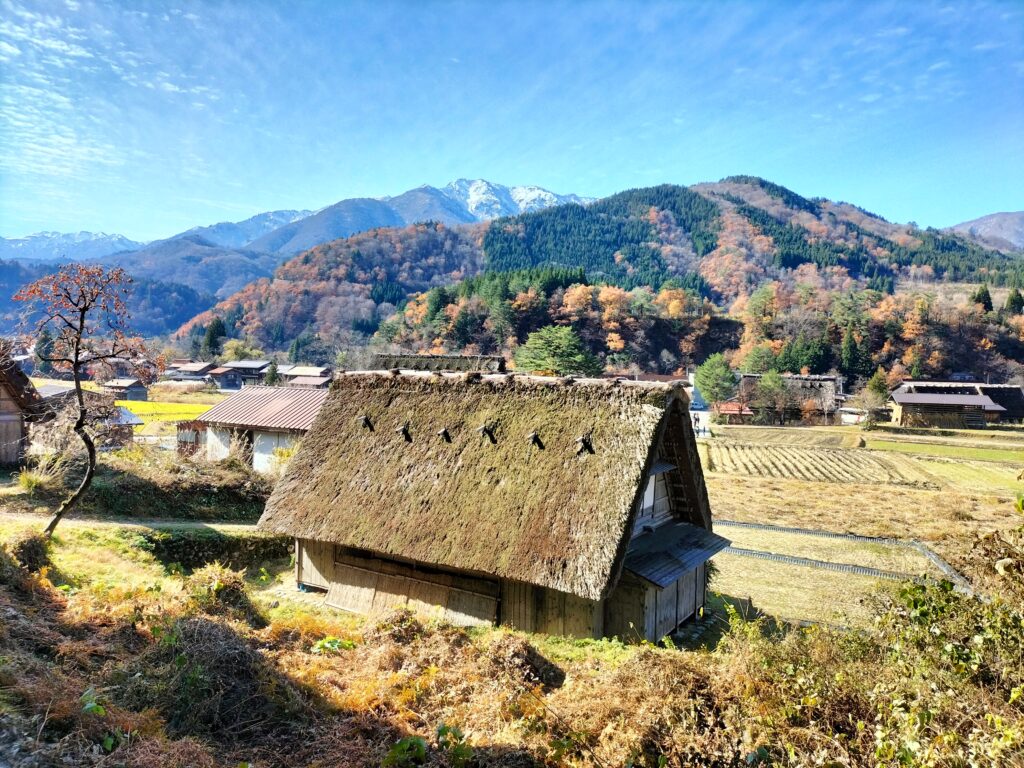Table of Contents
| You have never been to Shirakawa-go if… ATTRACTIONS – you haven’t had a Japanese tea sitting on the floor in one of the beautiful cafes. ACTIVITIES – you haven’t hiked up the hill to see Shirakawa-go from above. |
Introduction
Japan is a country of contrasts, where the modernity of cities like Tokyo and Osaka is juxtaposed with places that have remained deeply anchored to the past of this wonderful country.
If, after visiting the metropolises of the Land of the Rising Sun, you need to catch your breath and disconnect from everything that is made of glass and concrete, then the UNESCO heritage village of Shirakawa-go is the perfect place for you!
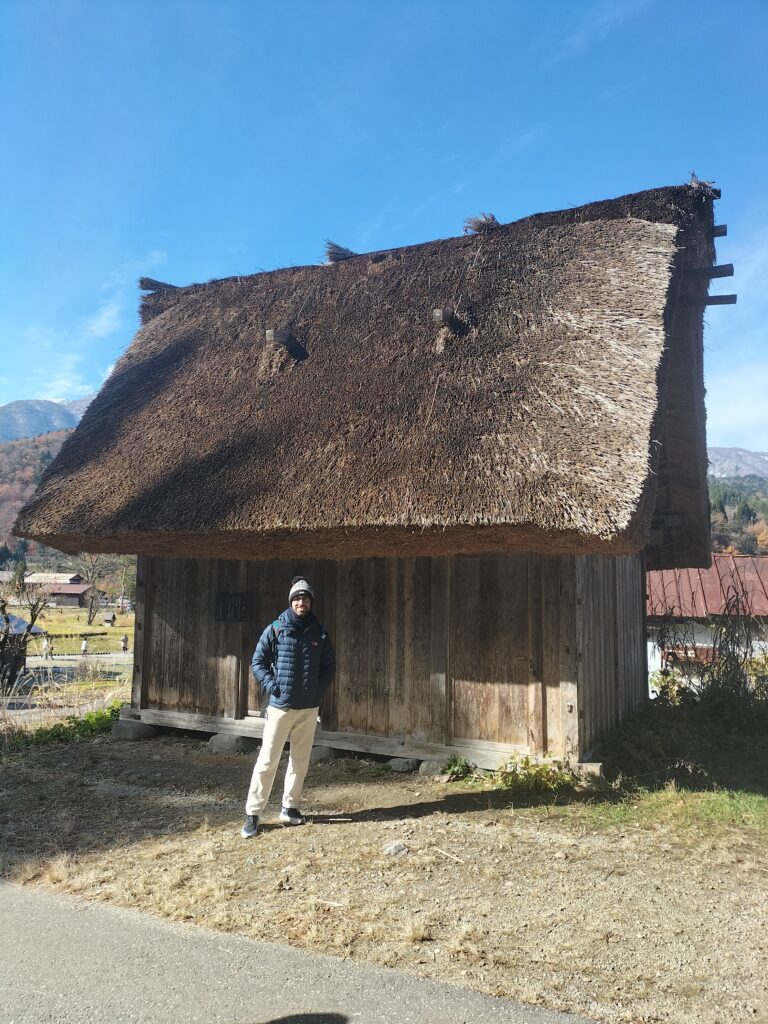
In this article, we’ll show you what to see in Shirakawa-go in 1 day! We stayed here at the end of November 2023 and fell in love with this beautiful place. We can’t wait to come back as soon as we can! Leave your impressions in the comments box at the bottom of the article!
Brief history of Shirakawa-go
Shirakawa-go is a gorgeous village nestled in the Shogawa River valley in Gifu Prefecture. It’s rich history is inextricably linked to the unique architecture of its houses and the vibrant agricultural and cultural traditions of the region.
This lovely village has been home to people for centuries. The first agricultural communities settled in the Shogawa River valley as early as the Heian period (794-1185). The village was so remote and tucked away in the mountains that it stayed pretty isolated from the rest of Japan for a long time. This isolation helped to keep the local traditions and lifestyle alive, and we’re really lucky to be able to visit them today!
During the Edo period (1603-1868), the people of Shirakawa-go began to develop some pretty impressive agricultural techniques, especially silkworm cultivation, which became a major source of income for the village.
The lovely gassho-zukuri houses, with their steep thatched roofs shaped like hands clasped in prayer (from which the name “gassho” comes), were developed to withstand heavy winter snowfalls. These lovely houses were also designed with plenty of space inside for raising silkworms, and they’re still the main attraction of Shirakawa-go today!
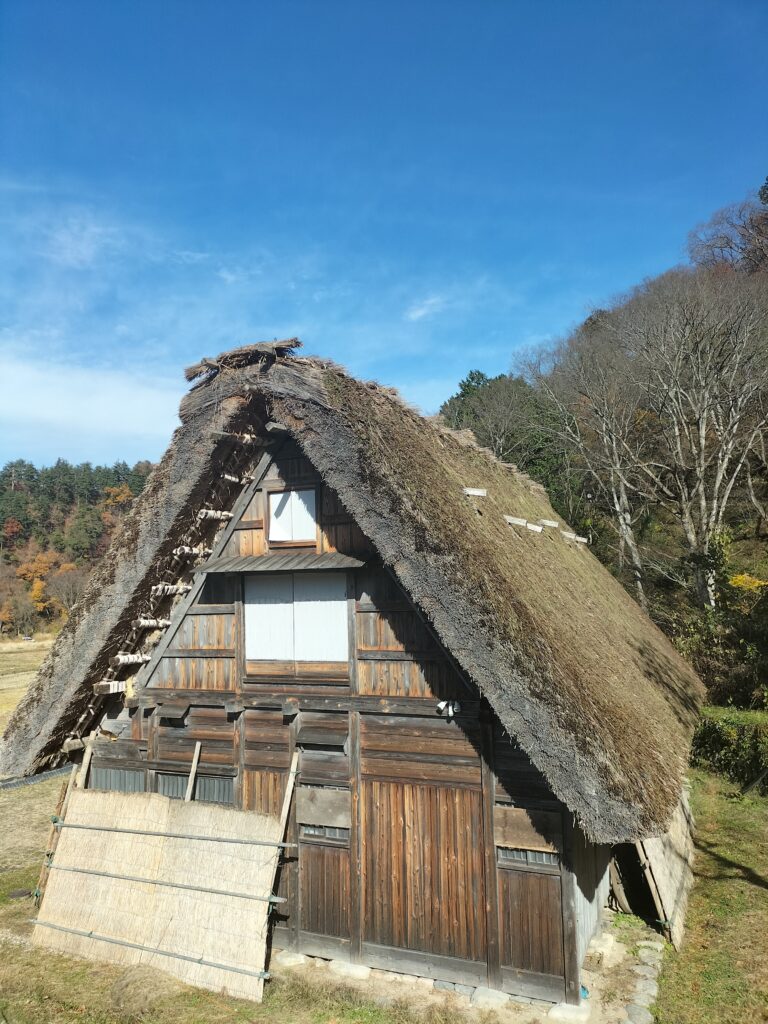
With Japan opening up to the world and the country going through an industrial revolution during the Meiji period (1868-1912), many people left their homes to find work in the cities. But even so, the village kept many of its agricultural traditions and practices alive.
Sadly, after World War II, many people left the village and many traditional houses were abandoned or demolished. In the 1960s and 1970s, people in Japan started to realise just how special Shirakawa-go is.
In 1995, Shirakawa-go, along with the nearby village of Gokayama, was given the wonderful honour of being named a UNESCO World Heritage Site. This wonderful recognition has led to some amazing efforts to conserve the beautiful gassho-zukuri houses and promote cultural tourism.
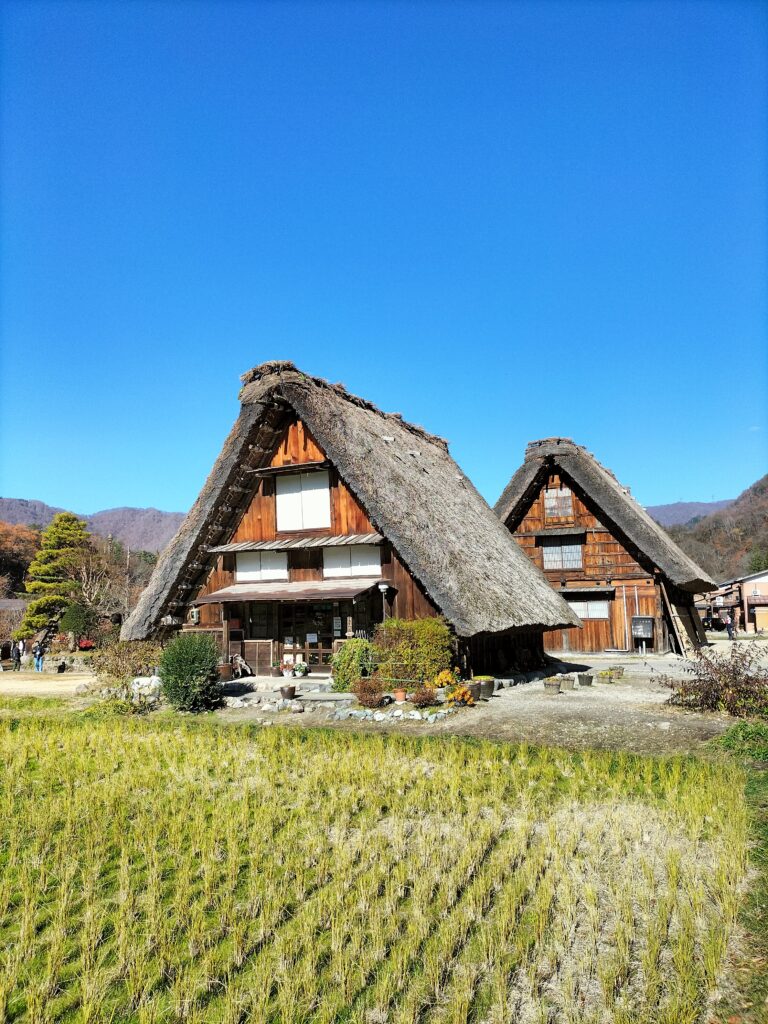
Today, Shirakawa-go is a popular tourist destination, and the lovely people of the village are doing their best to balance tourism with preserving the village’s cultural and architectural integrity. Many of the gassho-zukuri houses have been converted into museums, guesthouses and craft shops, where you can learn all about the local history and culture.
Shirakawa-go is a shining example of the incredible resilience and adaptability of Japanese rural communities. The village is a wonderful example of how tradition and modernity can coexist and it represents a tangible link with the past.
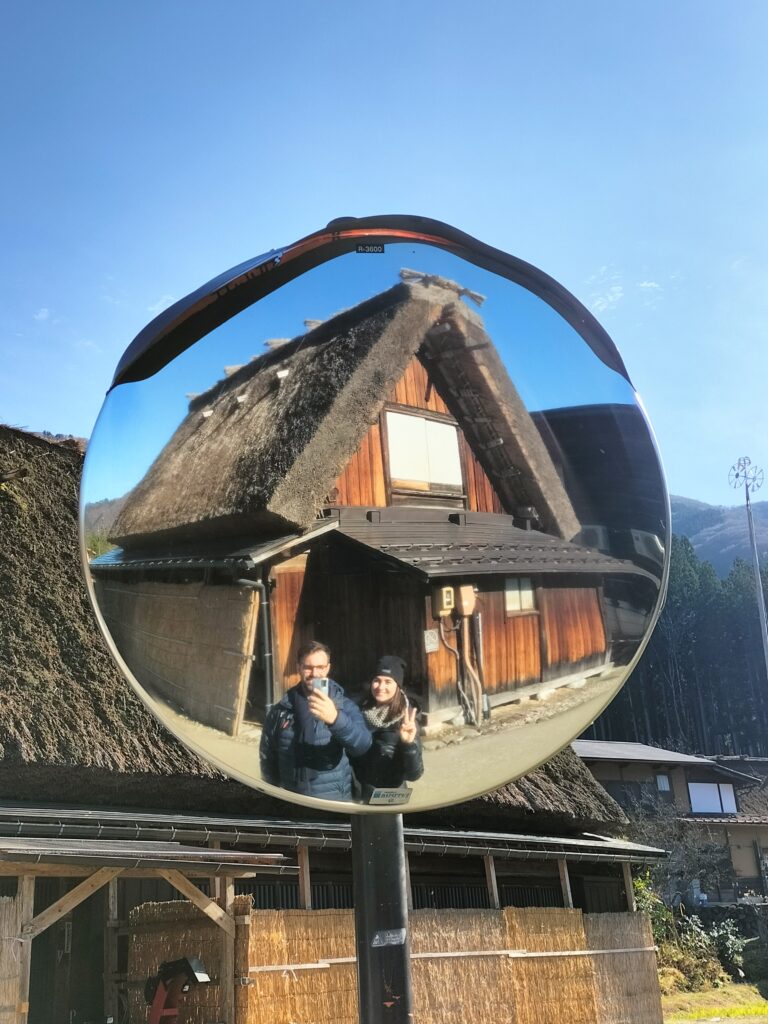
How to get to Shirakawa-go
If you’re looking to explore the beautiful Shirakawa-go village in Gifu Prefecture, you’ve got a couple of great options! You can reach it by bus or car, as there aren’t any train lines directly to the village.
Shirakawa-go is nestled in the Japanese mountains, which makes it rather difficult to reach. Many tourists decide to reach Shirakawa-go by bus from Kanazawa (about 2 hours), as this coastal city is always present in the classic itineraries of those who visit Japan for the first time.
We’ve got here all the info you need to reach Shirakawa-go from the main Japanese tourist destinations, so you can reach it no matter where you are!
If you’re traveling from Tokyo, you can take the Shinkansen from Shibuya Station to Nagoya. It’s a lovely journey that takes about an hour and a half, depending on which type of Shinkansen you use. Here’s a little tip for you: buy your train tickets on the right side of the carriage! This way, you can admire the majestic Mount Fuji from the comfort of your seat!
And now, do what we did! Once you’re in Nagoya Central Station, just follow the signs to the Meitetsu Bus Center, which is conveniently located inside the same building. From here, you can take a bus with either Japan Bus Lines or Willer. It’ll take you about 2 hours and 40 minutes to get to Shirakawa-go.
Me and Claudia, having lived in Nagoya for 3 months in 2023, strongly recommend you to spend at least a weekend in this city. There’s so much to see and do, we’ve put together a little guide to help you get the most out of your visit (read it here!).
If you are in Kanazawa, take a direct bus from Kanazawa Station to Shirakawa-go. The bus journey takes about an hour and a half, which is really quite quick! The Nohi and Hokutetsu buses offer regular services between Kanazawa and Shirakawa-go.
If you’re coming from Takayama, you can hop on a Nohi bus from Takayama Station and be in Shirakawa-go in no time! The bus journey takes approximately 50 minutes, so it’s a great way to get there!
If you’re coming from Osaka or Kyoto, you can hop on the Shinkansen from either Osaka or Kyoto Station to Nagoya. From Kyoto, the journey takes about an hour, while from Osaka it takes about an hour and a half. From Nagoya, just follow the same directions as before!
If you’re the adventurous type and prefer to drive, you can rent a car and drive to Shirakawa-go! The village is perfectly positioned for easy access by car, with clear directions to help you find your way. From Tokyo, the journey is about five to six hours, from Nagoya about three hours, from Kanazawa about one and a half hours, and from Osaka or Kyoto about four to five hours.
If you’re looking to rent a car, then look no further than DiscoverCars.com! You’ll find here the perfect rental solution.
If you’re planning on visiting during the winter, when the village is lit up for the festival of lights, it’s a great idea to book both your bus tickets and accommodation in advance.
What to see in Shirakawa-go
The main village of Ogimachi is the beating heart of Shirakawa-go and is home to the most incredible gassho-zukuri style houses. Your adventure begins right at the village entrance, where you’ll be dropped off at the bus terminal.
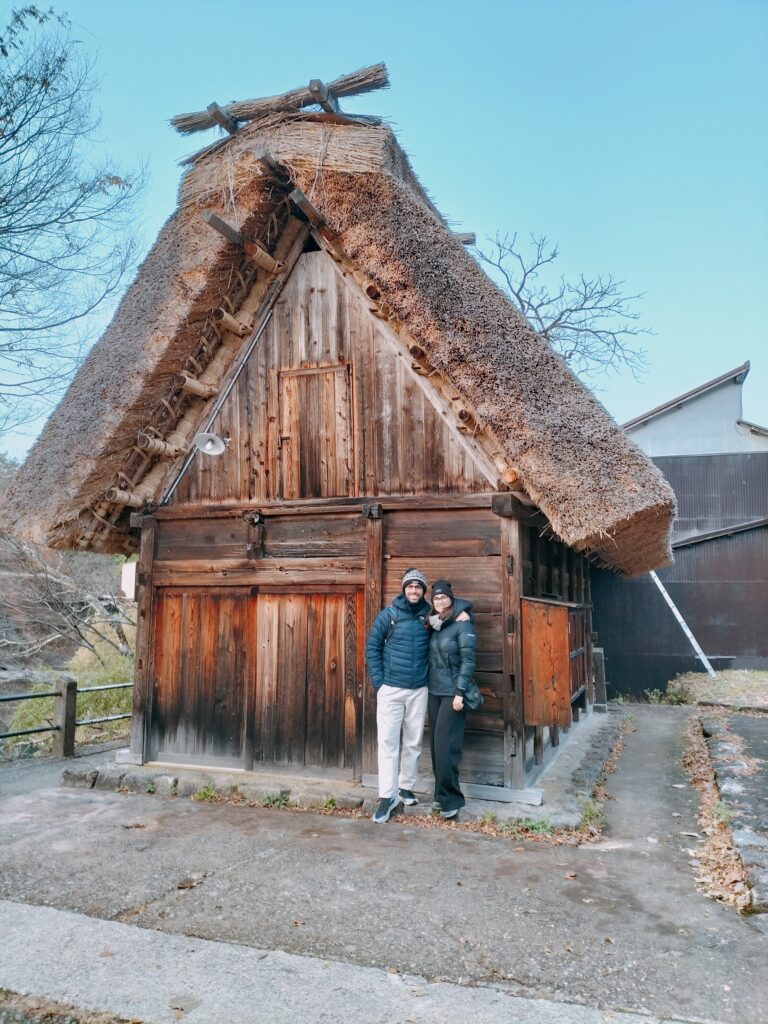
The Wada House is one of the best-preserved and largest gassho-zukuri houses in the village, and it’s open to the public for visits! Another attraction is the Kanda House, which offers a well-preserved interior and a fascinating history. Both houses offer a fascinating insight into the daily lives of Shirakawa-go residents in centuries past.
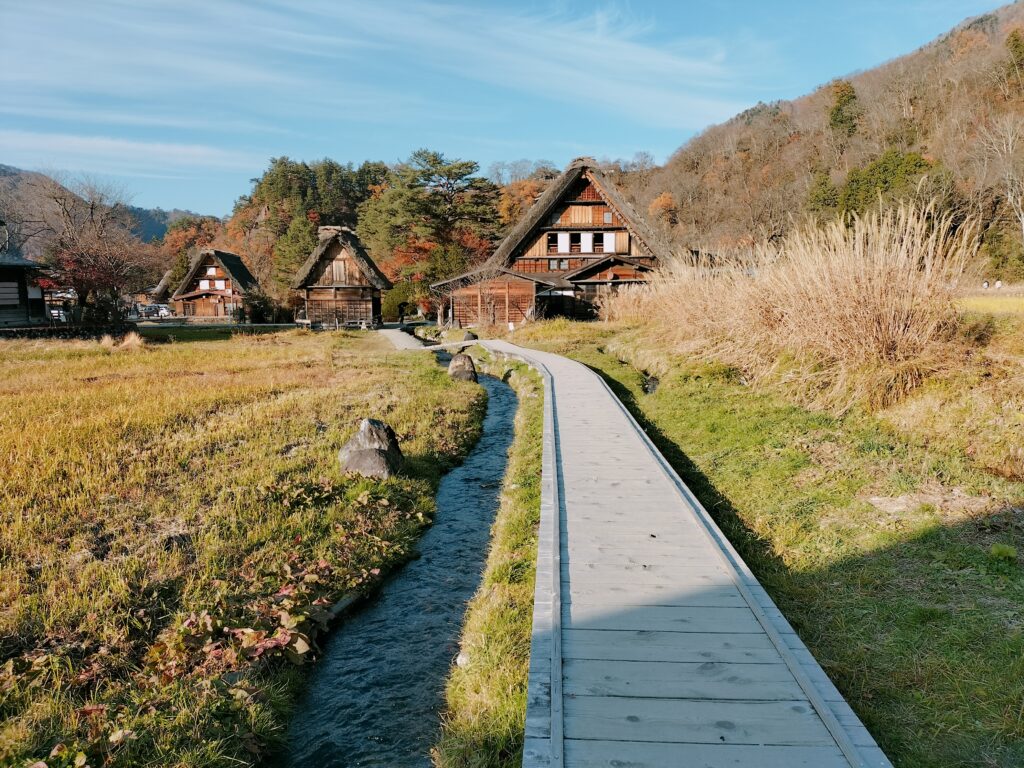
For an absolutely spectacular panoramic view of Ogimachi Village, you simply have to head to Shiroyama Observatory! From here, you can take breathtaking photos of the thatched-roof houses and mountainous surroundings – it’s a photographer’s dream!
After the bus terminal, you’ll come to some beautiful rice fields. Head north from there and enjoy the stunning views as you climb up the hill. Just remember to take it easy if it’s icy in winter or in the suffocating Japanese summer heat. But the view from the top is absolutely worth the effort!
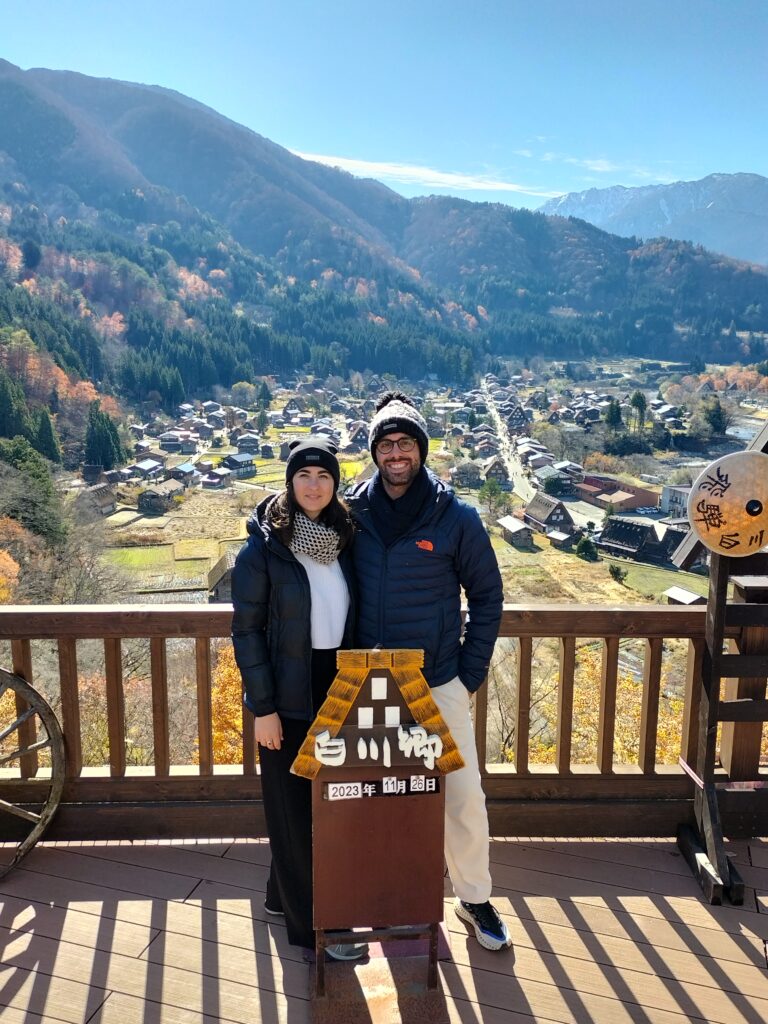
On your way back to the village, be sure to stop by the Myozenji Temple! The temple and its magnificent bell tower, which is also a gassho-zukuri house, are absolutely fascinating examples of local architecture.
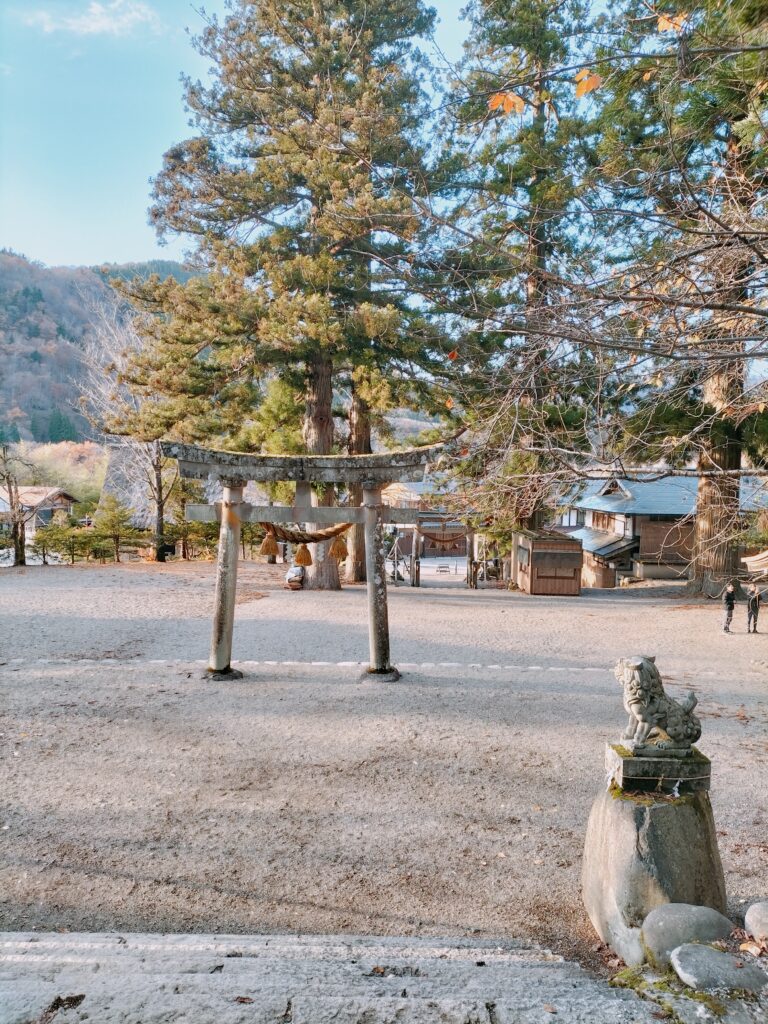
The Gassho-zukuri Open-Air Museum is home to several magnificent gassho-zukuri houses that have been transported here from other parts of the region. It’s an amazing place to learn more about village life and traditions! However, if you have only a few hours available, we do not recommend the visit as it summarises what you have already seen of the village of Ogimachi.
During the winter months, Shirakawa-go plays host to a truly special event: the Winter Lights Festival! On this special occasion, the gassho-zukuri houses are illuminated at night, creating a truly magical atmosphere. This event is absolutely amazing and it’s so popular, so it’s definitely worth booking in advance!
If you love hiking, you’ll adore Shirakawa-go! It’s surrounded by beautiful mountains and hiking trails. There are various walks offering spectacular views of the village and surrounding nature.
You simply have to stay in one of the gassho-zukuri houses offering minshuku (traditional guesthouse) style accommodation. This allows you to fully immerse yourself in the culture and history of Shirakawa-go. Unfortunately, we didn’t have time to stay the night and we were really sorry. Since the last tourist buses leave in the late afternoon, the village remains suspended in time and spending a night here must truly be a regenerating experience!
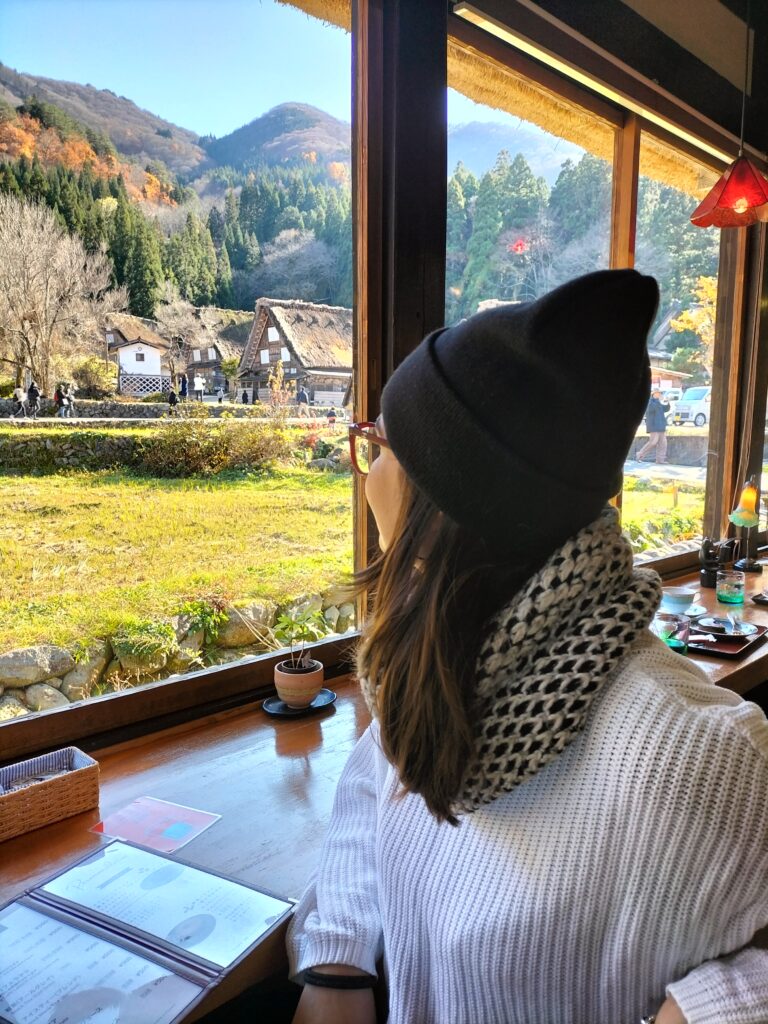

Our advice is to get lost in the narrow streets of the village and enjoy the super relaxing atmosphere of the place. Although Shirakawa-go has become a popular tourist destination over the years, we were lucky enough to avoid any problems of overtourism and were able to enjoy this wonderful experience to the fullest.
Find out about all the activities you can do in Shirakawa-go and book them right here!
What to read before traveling to Japan
If you’re planning a trip to Japan, we recommend diving into a few books that will enrich your understanding of the country’s culture, history, and everyday life.
Fear and Trembling by Amélie Nothomb
This witty and thought-provoking novel offers a glimpse into the complexities of Japanese corporate culture. Through the eyes of a young Belgian woman working in a Tokyo firm, Nothomb explores themes of hierarchy, tradition, and identity, making it a fascinating read before your journey. We absolutely loved it!

Days at the Morisaki Bookshop by Satoshi Yagisawa
This heartwarming novel set in a quaint Tokyo bookshop is perfect for those who love stories about personal growth and finding oneself. It beautifully captures the charm of small Tokyo neighborhoods and the healing power of literature. This story is set in Tokyo, but it describes well the culture and characteristics of the Japanese people in general. Highly recommended!

The Passenger: Japan
This travel anthology is a collection of essays and stories that delve into various aspects of Japan, from its rich history to modern-day society. It’s an ideal read for gaining a deeper understanding of Japan’s complexities before you arrive.
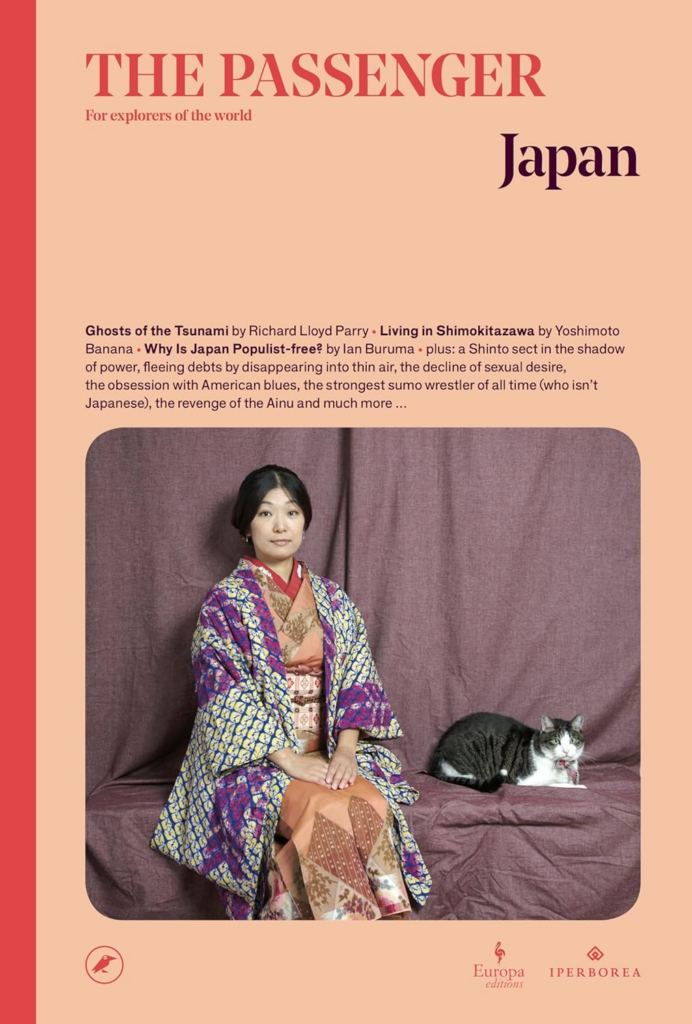
Travel Tips from KeepMoosing
Traveling is exciting, but protecting your data should always be a priority. That’s why we trust Surfshark, a leading cybersecurity company offering tools like VPN, Antivirus, and Alert (a data breach detection system). We highly recommend Surfshark for its versatile VPN, which is perfect for keeping your digital life secure while on the go.
With Surfshark VPN, you can safely use public Wi-Fi networks without worrying about fraud or hacking, ensuring your sensitive information, such as passwords and banking details, stays protected. It also allows you to bypass geographical restrictions, so you can stream your favorite TV shows or access region-blocked websites from anywhere.
We also suggest using Surfshark VPN while planning your trip. It helps you avoid price discrimination by changing your virtual location, often leading to better deals on flights and hotels.
You can buy your subscription here!
Conclusions
This article showed you what to see in Shirakawa-go in 1 day, starting from different tourist spots in Japan. We highly recommend finding time to visit this wonderful, time-warped village.
It’s one of our favourite places in the world and well worth a visit! We really hope this guide about what to see in Shirakawa-go in 1 day will help you plan your trip! Leave your questions in the comments and we’ll get back to you as soon as we can.
***Some of the links on our blog are affiliate links. By purchasing through these links, you help us support our work at no extra cost to you.***

